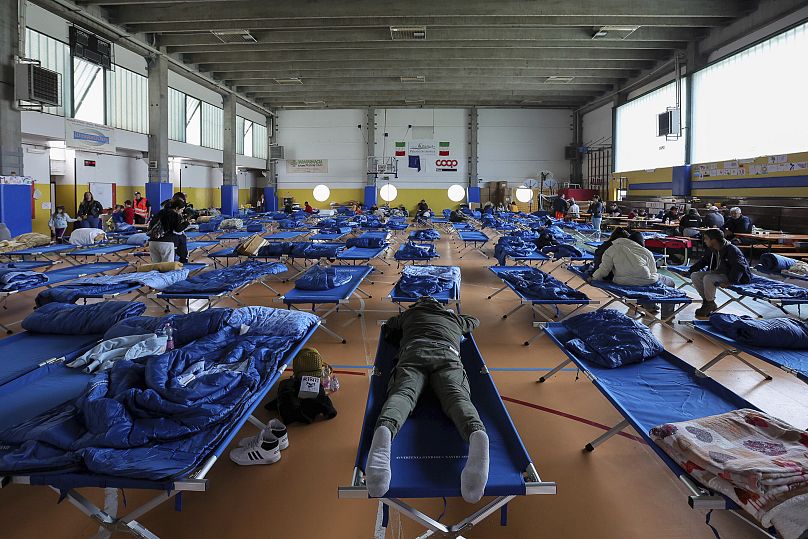Multi-billion-euro plans for measures to prevent flooding and landslides were scrapped by the government in 2018. After the tragedy in Emilia Romagna, there are new calls for the initiative to be revived.
At least 14 people have now been confirmed dead in Emilia Romagna, the northern Italian region that’s been devastated by record floods this week.
For those living in the area, it was a shock to see the familiar streets and squares of their beloved towns suddenly drowned by water and mud, their homes invaded by the unstoppable force of an extreme weather event nobody was expecting in the usually sunny month of May.
Some lost their homes, their cars, their pets, their lives: 75-year-old Giovanni Pavani died while talking on the phone with his neighbour who was trying to convince him to leave the ground floor house he lived in for his entire life and which he refused to abandon.
Climate change, with its alternation between periods of drought and periods of heavy rains, certainly played a crucial role in the flooding in Emilia Romagna. But at the heart of the tragedy, there’s also the way its territory has been developed in recent decades - and Italy’s vulnerability to extreme weather events.
According to ISPRA, the Italian Institute for Environmental Protection and Research, seven million Italians live in areas which are considered at risk of flooding.
Emilia Romagna is among the most vulnerable regions in the country when it comes to flooding and landslides, and it’s also the third region in Italy for the amount of concrete that has been poured onto it. Some 9% of its territory is impermeable to water - more than the national average of 7.1%. Hectares of land have been covered by concrete for new construction in recent years, making the region more vulnerable to flooding, as excess rainwater can hardly be absorbed by the ground.
Back in 2014, the Italian government led by Matteo Renzi introduced a plan called “Italia Sicura” - literally “Safe Italy” - which should have prevented similar tragedies. The plan freed €8 billion for projects that would protect the country against the risk of flooding, landslides, and other extreme weather events.
But most of this money has not been spent.
While in the four years following the introduction of Renzi’s plan significant progress was made, the initiative was eventually dismantled by the Giuseppe Conte government in 2018, and the money re-directed.
Ongoing projects to make Italian territory more resilient to extreme weather events have since been slowed down by lengthy and complex bureaucratic processes, delayed, or put on hold.
The region of Emilia Romagna had planned the construction of 23 containment basins between 2015 and 2022 at the cost of €190 million, but could only count on 12 functioning ones last week when 22 of its 23 rivers overflowed their banks.
Nine basins are still unfinished, and two worked only partially.
More recently, Italy’s Recovery and Resilience Plan - part of the EU response to the crisis triggered by the pandemic - included €2.5 billion to be spent by 2026 on similar projects.
But many in Italy are now asking for Renzi’s "Italia Sicura" task force to be reinstated - so that the money already available could immediately be spent on making Italy more resilient to such catastrophe as the one that struck Emilia Romagna.
The region remains under a weather alert.












